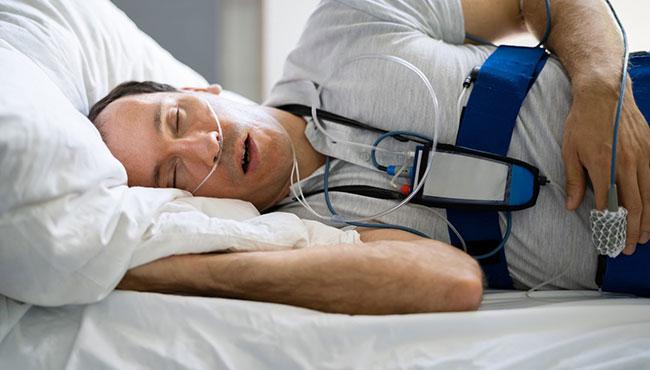How are polysomnography tests done in hospitals?
By Gavin | February 01, 2023
"Polysomnography is the gold standard for detecting sleep apnoea, as it can measure the number of pauses, the duration of breaks, EEG (sleep structure), blood oxygen, leg movements, sleep posture, snoring, and other indicators. These indicators give an excellent visual indication of the severity of snoring.
Some people have not had this test done and would like to know what it is like to have it done in a hospital. I will tell you how the polysomnography test is done in a hospital-based on what I know.

Sleeping in hospital for one night
The first thing to know about the polysomnography test is that you must sleep in the hospital overnight. A doctor in the outpatient clinic will interview you. Then you will be given an appointment to report to the ward or sleep room at the appointed time.
Electrodes will place on your head, body, and hands
The polysomnography test requires a variety of data, such as EEG to measure the quality of sleep during the night and chest and abdominal movements to measure the presence of central pauses.
And nasal airflow to measure the number and duration of uncertainties. So the polysomnography test "There are many things that need to be attached to the body for a 'polysomnography' test. Commonly there are electrodes on the head to measure EEG, airflow tubes on the nose, straps on the chest and abdomen, a pulse oximeter on the hands, and sensors on the feet to measure leg movements.
The above diagram shows the reference diagram for the polysomnography test. There is still a lot of equipment in the chart, which can affect normal sleeping conditions to a certain extent. So it is recommended that you do not drink before the test, take a good bath at home and wear loose and comfortable underwear before coming to the hospital with the results.
What is the doctor doing while you are sleeping
While you are sleeping, the doctor is not idle. Your monitoring data is displayed in real-time on the computer in the doctor's office.
The picture above is a picture I took in the hospital sleep room, and you can see many curves on the computer screen. A curve represents the real-time data connected to a wire on the body. The curve's meaning will not be explained to you one by one. You can look at the final results. You can refer to the bottom of the extended reading content if you do not know how to read the sleep monitoring report. On the right side of the screen, you can see your sleep in real-time through the video. For example, snoring sounds and the occurrence of apnoea are recorded.